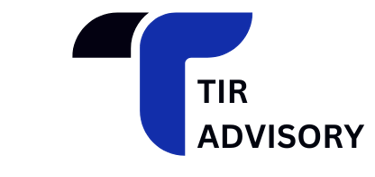





IT COMPLIANCE
We help you navigate the complex world of IT regulations and standards, ultimately reducing legal risks, protecting your data, and building trust.
Ensure your organization adheres to data protection laws, avoid fines and build trust by ensuring your data handling meets legal requirements.
Safeguard your insurance business, avoid regulatory penalties, and build stakeholder trust by ensuring your IT governance and security practices comply with OIC cybersecurity standards.
Support your organization in preparing for and implementing ISO 27001, from gap assessments and internal audits to developing clear, practical policies to ensure compliance and practical use.


Ensure your vendors and partners align with data protection and IT security standards to reduce risk and maintain regulatory compliance.


Tailored sessions for compliance topics (PDPA, phishing, internal controls) aligned with roles and responsibilities.
PDPA COMPLIANCE
What is the PDPA?
Thailand’s data protection law
Regulates collection, use, disclosure, storage of personal data
Aims to protect individual privacy and ensure responsible data handling
Full enforcement on 1 June 2022 and is overseen by the PDPC
Regulatory Risk — fines (up to THB 5 million), civil liability, and criminal charges.
Business Readiness — Required by banks, partners, and major clients
Operational Efficiency — Reduces errors and improves internal control
Brand Trust — Demonstrates responsibility and builds long-term credibility
How to Start?
Identify what data is collected and why
Review existing notices, consent, and handling processes
Train staff on roles and responsibilities
Seek expert help to build a practical, compliant system
Why It Matters to Your Business?
OIC Cybersecurity Compliance
What is the OIC Cybersecurity?
OIC Cybersecurity refers to the cybersecurity regulations issued by the Office of Insurance Commission (OIC) in Thailand. These regulations are designed to ensure that insurance companies and intermediaries — such as brokers and agents — have strong IT governance, risk management, and cybersecurity practices in place.
Complying with OIC Cybersecurity regulations helps insurance organizations:
Avoid regulatory fines or sanctions
Improve audit preparedness
Build customer trust by demonstrating strong data and system protection
Enhance internal capability to manage cyber threats
How to Start?
Understand Obligations: Review OIC Notification. Identify applicable sections.
Conduct Gap Assessment: Evaluate current state vs. OIC requirements. Identify gaps.
Develop Compliance Roadmap: Create plan: what, order, who, timeline, resources.
Build/Refine Components: Update/implement policies, processes, people roles, tools.
Prepare for Oversight: Set up KPI/KRI, OIC reporting, training, audits.
Why It Matters to Your Business?
ISO 27001 Readiness & Implementation
What is ISO 27001 ?
ISO 27001 is the global standard for Information Security Management Systems (ISMS). It provides a structured, risk-based framework to protect your critical information assets—ensuring their Confidentiality, Integrity, and Availability.
Implementing ISO 27001 isn't just about compliance; it's a strategic investment in your organization's resilience and reputation:
Robust Security: Proactively mitigates cyber risks and data breaches.
Regulatory Alignment: Simplifies adherence to data protection laws (e.g., GDPR).
Enhanced Trust: Builds confidence with clients, partners, and stakeholders.
Competitive Edge: Differentiates your business in the market and tenders.
Operational Excellence: Optimizes security processes and fosters a secure culture.
Cost Efficiency: Reduces financial and reputational damage from security incidents.
How to Start?
Embarking on your ISO 27001 journey requires a clear, systematic approach:
Executive Commitment: Secure leadership buy-in and resource allocation.
Scope Definition: Clearly outline the boundaries of your ISMS.
Risk Assessment: Identify, analyze, and evaluate your information security risks.
Control Implementation: Develop and deploy the necessary security policies and technical controls.
Awareness & Training: Cultivate a security-aware workforce.
Continuous Improvement: Regularly review and enhance your ISMS to adapt to evolving threats.
Why It Matters to Your Business?
Contact US
Leave your email for business contact, we will reach out to you asap!
info@tir-advisory.com
+66 95 582 9976
© 2025 by TIR Advisory Co. Ltd. All rights reserved.


